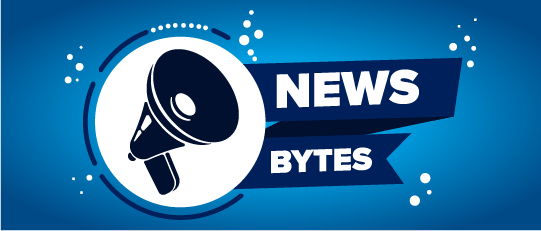- Focus on leadership development. Leadership coaching helps managers identify and align the employee’s competencies to the organization’s goals and objectives. This helps employees capitalize on their strengths and learn new skills that will help them be successful in their current and future roles.
- A growth mindset. Organizations should focus on developing a growth mindset for leaders and employees, creating a belief system that opportunities for learning and achievement are endless.
- Foster a psychologically safe environment. In a psychologically safe environment, team members, leaders, and other stakeholders collaborate and adapt more effectively.
Employment has continued to trend up with an increase of an additional 2 million open jobs in the United States from April 2021 to May 2022. Yet, according to new research by McKinsey & Company, the voluntary quit rate is 25% higher than pre-pandemic levels.
Why is that the case? The main reason people quit: a lack of career development and advancement. If employers are not already implementing new and improved people-focused engagement strategies as an integral part of their daily operations, they are losing out on top talent and their competitive position in the market.
According to the “2022 LinkedIn Global Talent Trends Report,” nearly 90% of employees agree offering professional development opportunities is the No. 1 way to improve company culture. These strategies will also help build a motivated, resilient workforce that will support the organization through tough economic times.
Leadership development is the missing link to retaining staff and boosting engagement. However, according to a recent AceUp report, 18% of organizations offer no coaching to help employees build leadership capacity. Among companies that offer coaching, 25% bring in professional third-party coaches, while 28% employ professional internal coaches.
Through leadership coaching and creating an environment of psychological safety, organizations can boost, reimagine and recalibrate employee engagement in a variety of ways that are all investments in the employee. This helps create a human-centered workplace where all employees are valued and respected. Organizations must ensure all employees feel as if they are in the right role and have the right support from their manager and leaders.
Renewed Focus on Growth and Development
In today’s tight labor market, organizations must drastically improve and enhance their employee experience to attract and retain employees. To be successful in this transformation, the perception of talent investment must be evident and generally known by any external audiences.
Industries are becoming more people-centric, and the need to educate, train and coach employees to perform at work is more important than ever to prevent employees from quitting or changing careers.
Historically, onboarding has been understood as a tactical and logistics-based process for most organizations. However, it is arguably the experience that will make or break an individual’s future and level of engagement with the organization. Employees must be immersed in your culture as soon as day one or earlier if possible.
In a Gallup survey, only 12% of employees strongly agree their company does a good job with onboarding. Clearly, most organizations are missing an important opportunity to make a good first impression and instill trust and a sense of shared purpose among their new hires.
By introducing leadership coaching at the onset, new hires can better understand their purpose in the organization and feel more comfortable in their roles. More importantly, it assures workers of their career progression pathway and sets expectations for continued growth and development throughout the employee lifecycle. Managers should work closely with new hires to identify their career goals and offer coaching and development opportunities to help them achieve their objectives.
Coaching also helps managers identify and align the employee’s competencies to the organization’s goals and objectives. This helps employees capitalize on their strengths and learn new skills that will help them be successful in their current and future roles. A competency-based approach to leadership development ensures the organization has the skill sets it needs to succeed now and in the future. More importantly, it moves the needle on key people metrics, including employee engagement and retention.
Developing Human-Centered Leadership
Leadership coaching and development are more impactful in organizations that have a growth mindset and human-centered leadership. A growth mindset fosters continuous improvement; individuals recognize they have the need and ability to learn and grow. Organizations should focus on developing a growth mindset for leaders and employees, creating a belief system that opportunities for learning and achievement are endless.
It motivates employees to work through challenges instead of giving up. This goes hand in hand with putting people over process, which is the key to human-centered leadership and being a conscious and authentic leader.
People recognize their effort is part of the solution and learn to embrace constructive feedback. It creates new growth opportunities and helps employees — and leaders — set higher standards for personal and team achievement. Leadership coaching fosters a growth mindset by instilling curiosity among employees, driving them to tackle new challenges and view problems differently.
Coaching also encourages leaders to reconceptualize soft skills that are foundational to employee well-being, mental health, culture, and virtually all aspects of an organization, especially in a post-COVID world. While soft skills are often seen as intangible and difficult to measure, that couldn’t be further from the truth — they are teachable, scalable and powerful.
Leadership development and coaching, of course, must grow with the individual and continue through all levels of the organization. This helps drive alignment toward common goals, objectives and outcomes. Developing the skills of mid-level employees not only improves their performance but also that of their team.
Managers benefit from learning new ways to engage and motivate their team members and how to foster a learning culture that creates a strong talent pipeline. Executive leadership coaching helps leaders learn and reflect, and it equips them with the skills needed to build and maintain human-centered organizations that attract and retain top talent.
Fostering a Psychologically Safe Culture
Job seekers currently have more options than ever and can choose where they want to work in most cases. And what are these employees putting at the top of their checklist? Salary and benefits, followed immediately by culture, manager support and autonomy, and personal and professional growth opportunities, among other things.
Looking at Millennials and Generation Z, we’ve learned these workers value purpose and seek meaning in their jobs. Sixty percent of Gen Zs and 59% of Millennials say they are more likely to stay at organizations that provide a sense of shared purpose, according to a 2019 study by O.C. Tanner.
Building a culture of psychological safety creates an environment where all employees are encouraged to speak up, express themselves freely without fear of reprisal or humiliation, and bring their whole selves to work — including race, gender and sexual orientation — without judgment. Psychological safety is key to building and fostering diversity, equity, inclusion and belonging.
In a psychologically safe environment, team members, leaders, and other stakeholders collaborate and adapt more effectively.
“The implication of psychological safety is that anyone’s voice could be mission-critical,” said Amy C. Edmondson, Novartis Professor of Leadership and Management at Harvard Business School. “Anyone might have a game-changing idea, question, concern, or problem that could change the course of the project[and] mission.”
Managers who support an environment of psychological safety get to know their team members on a personal level to understand their motivations and beliefs. They respect diverse opinions and engage team members in decision-making. This improves individual and team performance and ultimately supports a high-performing, resilient workforce.
A report by McKinsey suggests that coaching helps leaders cultivate a psychologically safe environment by providing them with the skills they need to create a positive team environment, including fostering group dynamics, recognizing unconscious bias and leading with humility. The report notes, “Fostering psychological safety at scale begins with companies’ most senior leaders developing and embodying the leadership behaviors they want to see across the organization.”
Leadership coaching equips leaders and their teams with the skills and support they need to grow and develop. As part of a comprehensive talent strategy, coaching quells attrition and builds employee engagement by creating a human-centric environment where all employees feel empowered to speak freely, take risks, and innovate. Combined with a growth mindset and an environment that supports psychological safety, organizations can unleash their employees’ potential and drive transformation, placing the organization at a distinct market advantage.
When employee and leadership development become part of the learning and development strategy, it shows the organization cares about its people and is invested in their future. By enhancing the employee experience, organizations will be able to attract and retain top talent and develop a high-performing workforce for the future, put an end to the Great Resignation, and prepare for future economic uncertainty.
Editor’s Note: Additional Content
For more information and resources related to this article see the pages below, which offer quick access to all WorldatWork content on these topics:







